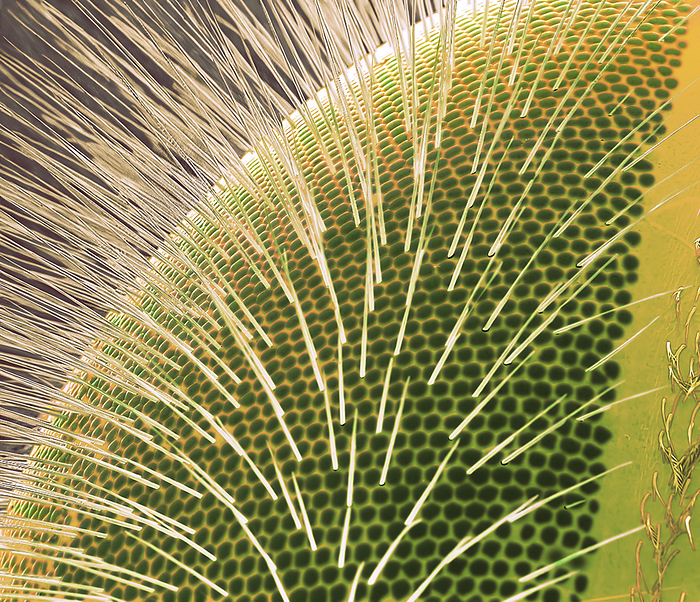
RM
Bee eye, SEM
Bee eye. Coloured scanning electron micrograph (SEM) of the compound eye of a honey bee (Apis mellifera). Protective hairs cover its surface. The eye consists of many visual units, known as ommatidia. Each ommatidium consists of an outer cuticle covering a lens, beneath which is a group of light-sensitive cells known as the retinula. Nerve fibres from the retinula converge onto the optic nerve, relaying visual signals to the brain. The image seen by insects with compound eyes is thought to be a mosaic image, poorly focused but good at detecting movements. As well as two large eyes either side of its head, a bee has three simple or ocelli eyes on the top of its head. These detect light (but not shapes), meaning that a bee can sense if it is being approached from above by a predator.Magnification: x250 when printed at 10cm wide, by STEVE GSCHMEISSNER/SCIENCE PHOTO LIBRARY

More
Top Categories
